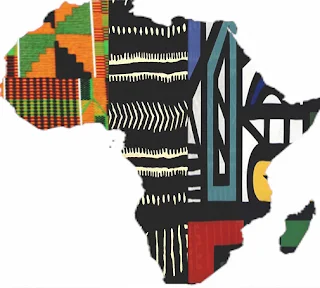Ndebele Prints Influenced Pop Art
The Intersection of Ndebele Art and Pop Art
 |
| Ndebele Print |
Connections between Ndebele Art and the Pop Art movement.
Ndebele art captivates with its vibrant geometric patterns and bold color palettes, shaping global art forms, including the Pop Art movement. Traditional wall paintings and beadwork from the Ndebele culture stand out with striking designs and vivid hues that echo Pop Art's focus on bold visuals and cultural symbolism.
Ndebele Pop Art
Art has always been a universal language, bridging cultures, traditions, and time periods. Imagine the intricate, geometric vibrancy of Ndebele art intersecting with the bold, commercial appeal of Pop Art. This dynamic blend offers a fascinating lens through which to explore global artistic narratives. Ndebele art, rooted in the rich cultural traditions of South Africa, stands as a testament to resilience and identity. Pop Art, emerging from mid-20th century America, celebrates the every day with its bold, graphic style. Together, they create a visual dialogue that transcends boundaries.
Ndebele Art: A Vibrant Tradition
Ndebele art, deeply embedded in the heritage of the Ndebele people of South Africa, is much more than decoration—it’s a language of identity and resistance. Historically, Ndebele women painted their homes with vibrant, geometric patterns to express cultural pride and individuality. These patterns, often passed down through generations, symbolize social status, marital rites, and community values.
Esther Mahlangu, an iconic figure in Ndebele art, revolutionized this tradition. She brought the style to a global stage by translating its patterns onto unconventional mediums such as cars, sneakers, and canvases. Mahlangu’s innovative approach highlights the adaptability and timelessness of Ndebele art, ensuring its relevance in contemporary contexts. The bold colors and precise geometry—often resembling intricate mosaics—carry profound cultural narratives that resonate universally.
The Rise of Pop Art
Pop Art burst onto the scene in the 1950s and 1960s, disrupting traditional art norms. Artists like Andy Warhol and Roy Lichtenstein redefined the art world by embracing everyday objects, consumer culture, and mass media. Bold colors, repetitive patterns, and graphic imagery became the hallmarks of this movement. Pop Art blurred the lines between high art and popular culture, reflecting the societal shifts of its time.
This movement was a mirror of its environment, capturing the optimism, consumerism, and contradictions of post-war America. The emphasis on accessible imagery and vibrant aesthetics made Pop Art a powerful tool for communicating complex ideas in an approachable manner. Today, emerging Pop Art talents like KAWS, Takashi Murakami, and Yayoi Kusama continue to expand this tradition by blending modern cultural references with the bold, graphic elements that define the movement.
Points of Convergence
At first glance, Ndebele art and Pop Art may seem worlds apart, yet their shared visual language bridges the gap. Both styles celebrate bold colors and geometric precision, capturing attention through their striking designs. Ndebele art’s vibrant patterns symbolize cultural identity, while Pop Art’s playful graphics reflect societal narratives.Contemporary Influences and Legacy
In today’s art world, the fusion of Ndebele art and Pop Art continues to inspire. Contemporary artists draw on the geometric precision of Ndebele patterns and the boldness of Pop Art’s imagery to create works that speak to global audiences. Fashion, interior design, and digital media increasingly reflect this convergence, highlighting the timeless appeal of these styles.Ndebele art forms a vibrant bridge to contemporary art, echoing in the works of global and African artists. Esther Mahlangu and her contemporaries showcase how traditional African art redefines modern expressions.




